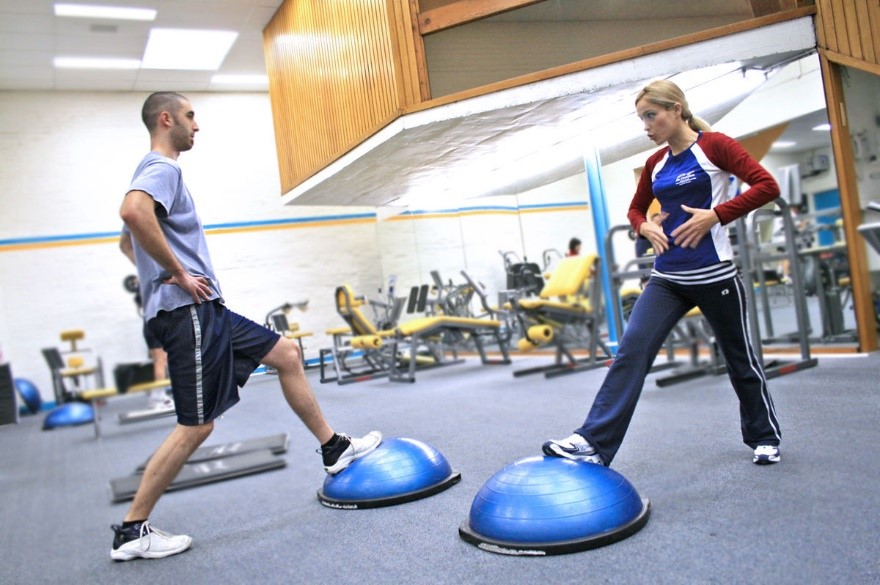Active Physiotherapy
Active treatments are things that you actively participate in to try and alleviate your pain and improve your mobility, strength and fitness. It is important to realize that greater than 95% of your day is spent outside of your therapists’ office. What you do for yourself, is actually more important than what your therapist does to you. As you progress through your treatment program, your therapists’ primary role is in educating you as to what you can and should do for yourself.
Physiotherapy is a science based healthcare profession which views movement as medicine. Physiotherapists aim to identify and make the most of movement ability by health promotion, preventative advice, treatment and rehabilitation. The core skills used by a physiotherapist include manual therapy, therapeutic exercise, and the application of electrophysical modalities.
We believe it is vital to take note of psychological, cultural, and social factors which influence our clients. We believe in encouraging our patients to take an active role to help themselves to make the best of their independence and function.
Bridge Physiotherapy will assist you in achieving your highest level of physical functioning by providing you with a personalized treatment plan based on your specific needs. We will assess your posture, range of motion (ROM), strength and other physical abilities. Then we will design a personalized treatment and exercise program to assist in alleviating pain, restore joint ROM, increase muscle strength and co-ordination and maximizing independence. When necessary, we will also assist in designing an ergonomically correct work and home environment, and help

you return to work and leisure activities through physical conditioning programs.
The focus of Bridge Physiotherapy is on Active rehabilitation. Bob is a Credentialed McKenzie Therapist and employs a philosophy of active patient involvement and education that is trusted and used by practitioners around the world for neck, back, and extremity problems.
Step 1 Assessment: Unique to the McKenzie Method is a process that begins with a thorough history and testing to identify distinct patterns of pain responses that are: reproducible, objective, reliable, and reflect the characteristics of the underlying pain generator. The most common and meaningful pattern of pain response is Centralization, which is defined as a patient’s referred or radiating pain promptly reversing, returning to the center of the spine, or injured joint , and then usually abolishing.
If centralization occurs, it provides a rational guide to the most optimal treatment strategy for a specific patient. While every patient can benefit from the McKenzie Method of assessment, not all patients will be suitable for mechanical therapy, and this can be determined quickly so that alternative treatments can begin as soon as possible.
Step 2 Treatment: There are three basic stages to the treatment program:
- I) Pain control: When appropriate, a series of individual exercises are prescribed based on the individuals Directional Preference that will centralize or abolish pain.
- II) Recovery of movement
III) Physical conditioning and Work/sport conditioning
These stages are not mutually exclusive. They serve as a guide for goal setting during treatment. They overlap one another, and an individual may move backwards and forwards through this treatment continuum.
Step 3 Prevention: Most patients who do respond favorably to MDT can successfully treat themselves – and minimize the number of visits to the clinic- when provided with the necessary knowledge and tools putting them in control of their treatment safely and effectively.
No matter how regularly you may attend treatment, most of your life is spent away from the clinic. But your pain does not take the time off!
To be an active participant in your treatment means you need to learn a lot, and be able to remember it when you need it. The purpose of these blogs (and website) is to provide you with immediate access to the resources you need, when you need it – not just when your therapist is available.
